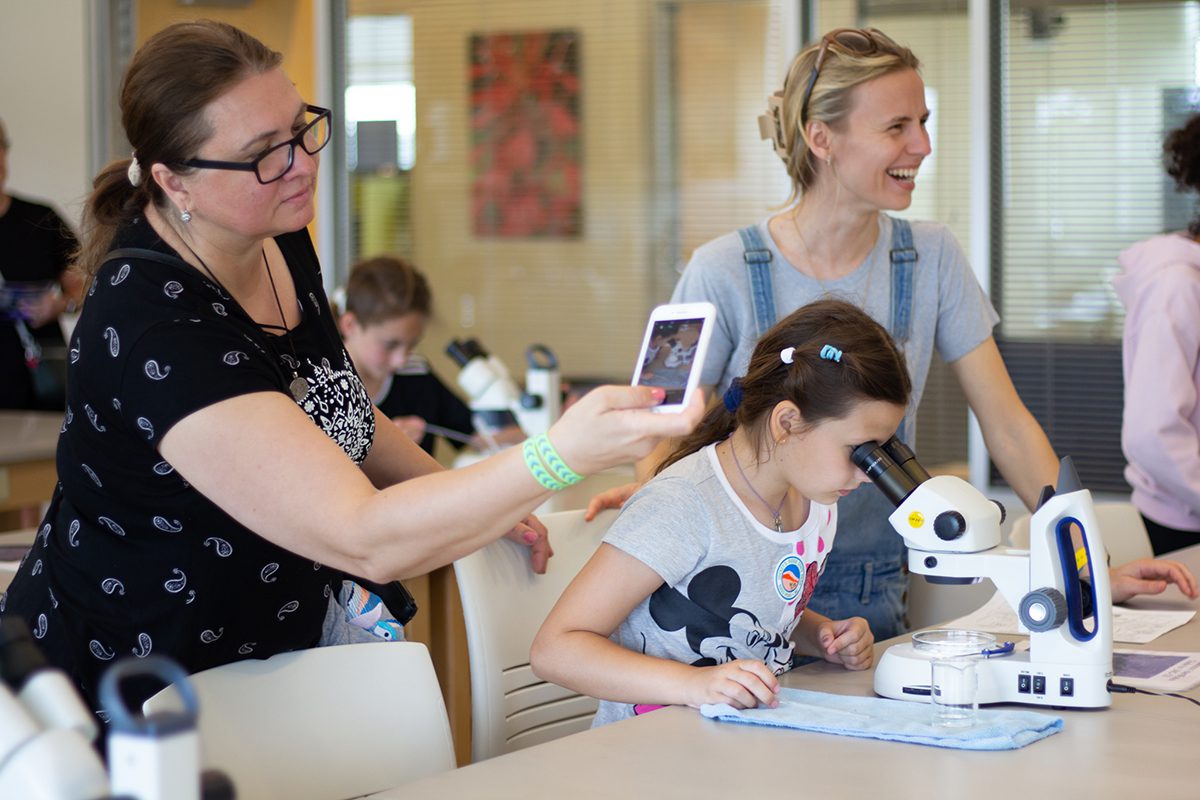
WANCHESE—Location.
That was a driving force behind the establishment of the Coastal Studies Institute, or CSI, a decade ago as a research partnership between five public North Carolina universities. Being on the Outer Banks provides direct access to the nation’s second-largest estuary, the Albemarle-Pamlico, as well as to a unique part of the Atlantic Ocean.
Supporter Spotlight
And CSI’s location continues to make it valuable in the eyes of those involved today, from the executive director to professors and researchers to undergraduate students.
“CSI is a place-based steward of the best available data and science,” Executive Director Dr. Reide Corbett told Coastal Review in an email. Such place-based facilities “transform the lives of students of all ages” and allow collaboration with the local community “to integrate science into decision-making.”
To celebrate 10 years on the Outer Banks, CSI held a free open house Saturday on its campus in Wanchese. The public was invited to tour the building, participate in a variety of hands-on learning experiences and talk to professors, researchers and students from East Carolina University, Elizabeth City State University and the College of The Albemarle.
Various organizations in the Coastal Environmental Educators Network also had informational and activity booths on-site for the 2023 Earth Fair OBX that took place in conjunction with the open house.
The parking lot was full by midday and groups of people meandered through and around the LEED Gold-certified building. LEED is a green building rating system.
Supporter Spotlight
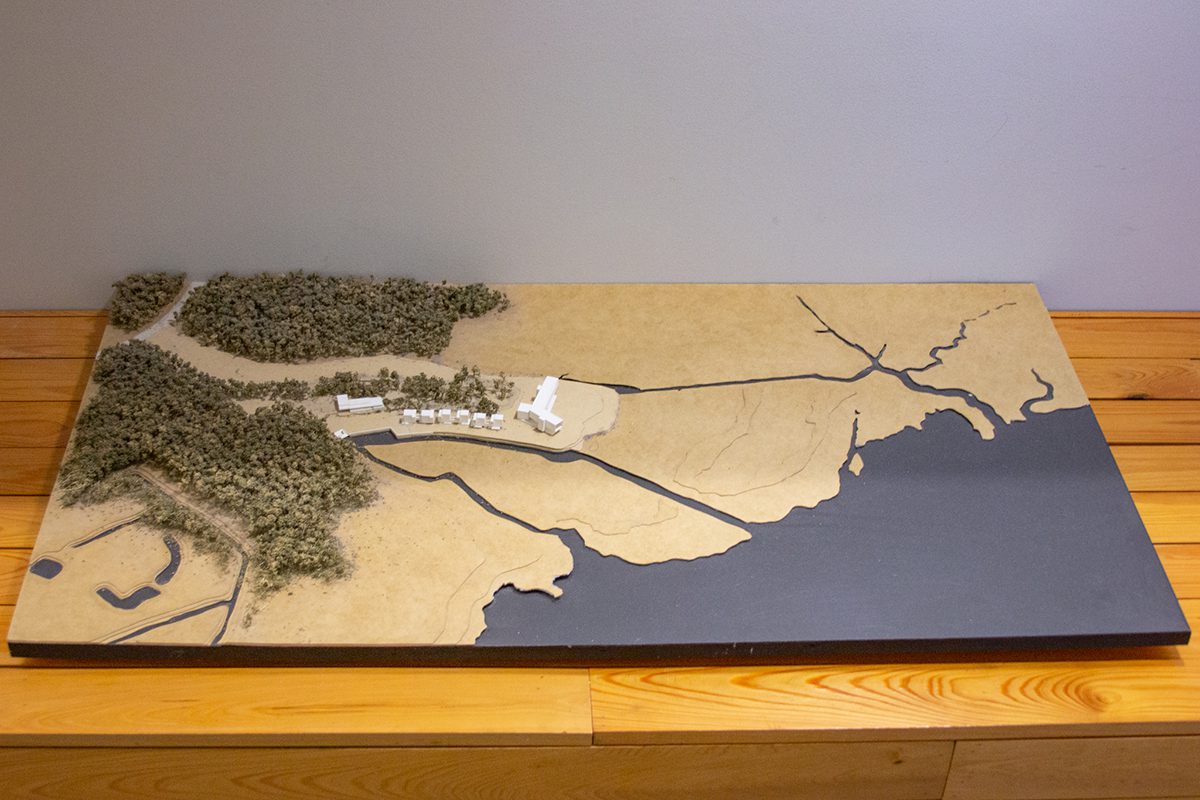
A family viewed local shipwreck video footage through 3D glasses in the scientific diving lab room. Groups of attendees perused rooms full of the latest research on marsh cores and sediments, Gulf Stream ecology, renewable ocean energy and more. Attendees also had the chance to see drones, autonomous vehicles, a wave energy converter, CSI’s research boat and other science technology firsthand.
Dr. Jim Morley, an assistant professor in ECU’s biology department, welcomed members of the public into the Fisheries Ecology Lab he oversees on CSI’s third floor. He had a computer screen set up to display the view through a microscope of tiny crabs and transparent shore shrimp swimming in a water sample.
Morley said he’s been stationed here for almost 3½ years. “The best part? Definitely the location,” he stated. “Just being close to the places where you’re conducting field research is very handy.”
The Albemarle-Pamlico estuary, located directly behind CSI, is one of the country’s most important estuaries “in terms of fish productivity,” Morley said.
The six people he oversees in the lab are interested in how marine ecosystems change over time.
“We’re doing research on climate change impacts and other forms of human interference with habitats,” he said. They’re also currently studying a shrimp parasite. And they’ll start a project this summer on invasive species of catfish to see “what their predatory impact is on the native species.”
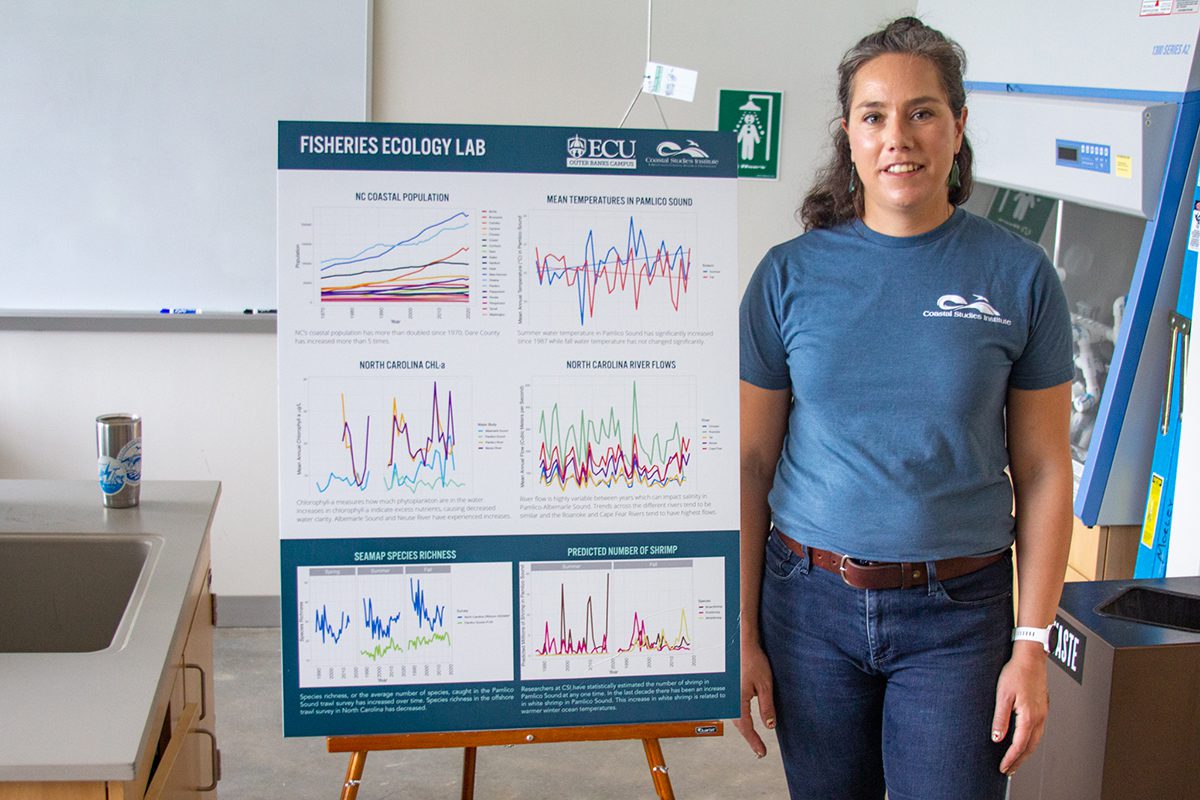
Next to him, Lela Schlenker, a postdoctoral ECU student, invited people to catch and hold shore shrimp swimming with small fish and crabs in tanks on a lab counter.
“I’m a fisheries biologist, and this project is a broad fisheries assessment,” Schlenker said of a nearby set of charts displaying her research. “We’re basically trying to understand the state of fisheries and ecosystem in North Carolina.”
Verena Wang, another ECU postdoctoral scholar, invited people to hold an otolith. Otoliths are ear bones unique to fish, which help them both hear and orient themselves as they swim, she explained.

Juvenile fish develop daily otolith rings, while older fish have yearly rings, like a tree. Scientists can tell how old a fish was and what species it was just by studying its otolith, since each species’ otolith has a unique shape and size, Wang explained.
In a second-floor classroom, undergraduate ECU students asked attendees if they wanted to look through microscopes at various forms of plankton. Laminated sets of photographs of plankton and their corresponding names were next to each telescope.
Julia Callender, a junior ECU biology major and coastal studies minor, helped a child get situated at a microscope. Callender is studying in the semester-long program ECU offers at CSI, which she said is “like a study abroad program, but it’s local.”
The undergraduate housing in Manteo costs the same as a semester in a campus dormitory, but doesn’t include the meal plan, she said.
Prior to coming to CSI, “I didn’t think I was interested in working with the public,” Callender said, but she found she has enjoyed working with the K-12 science outreach program. She has also enjoyed the hands-on learning — even learning how to tie boat knots — and the small undergraduate class sizes, generally between four to 10 students, which “are beneficial” for developing relationships with professors. She plans to host an outreach table when she returns to Greenville to recruit more students to the program: “Why wouldn’t you want to come here?”
Outside on the dock by CSI, Andrew McMains, an ECU doctoral biology student, manned the Adaptive Resolution Imaging Sonar, or ARIS, which provides a way to count fish. A screen was set up so if a fish swam by, people could see it in real time. ARIS sends out sound, and fish bodies reflect it back, so it can still effectively be used when waters are not clear, he explained.
Starting this fall, he and his colleagues plan to study fish movement through Oregon Inlet. McMains said questions they hope to answer include whether predatory species or prey leave the sounds for the ocean first, and what exactly prompts fish to leave and to return — is it temperature or wind or multiple days at the same temperature?
Meanwhile, Patterson “Trip” Taylor, a research assistant at CSI for almost 10 years, stood on the deck of the Miss Caroline, which was docked nearby in the canal.
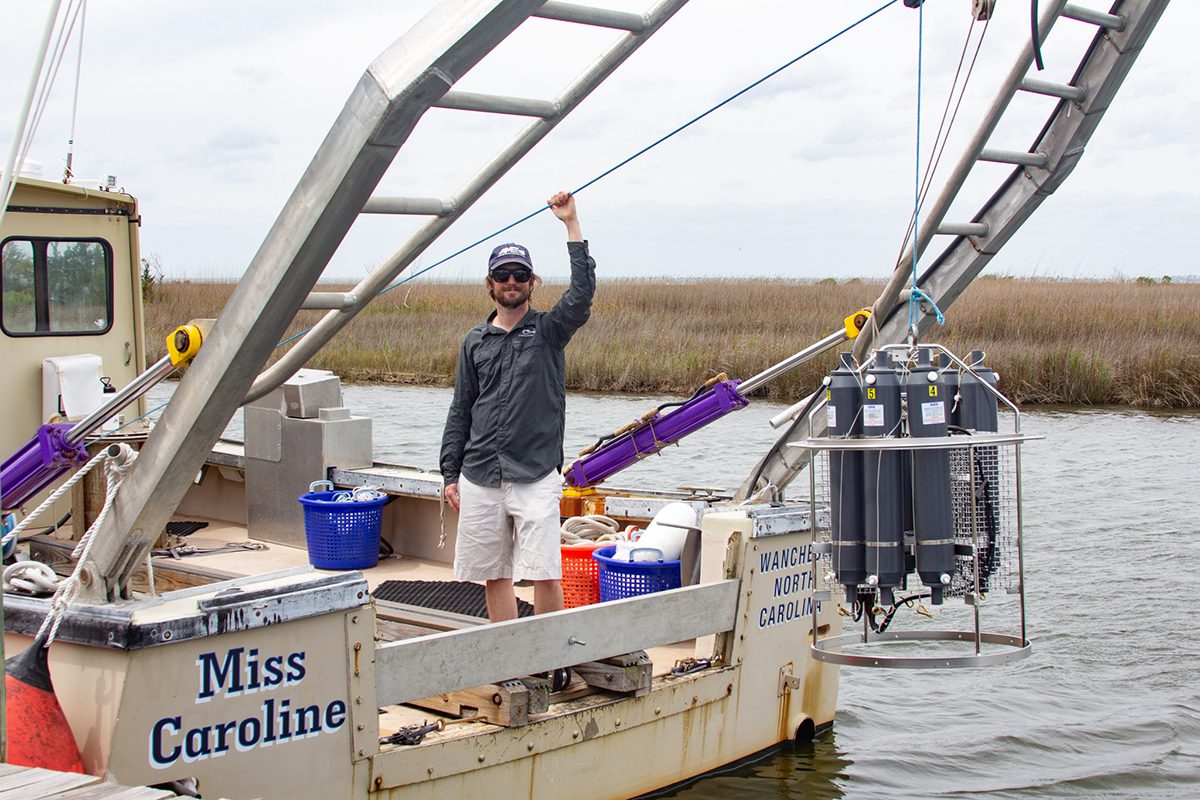
“This is our research vessel,” Taylor said, gesturing around the 42-foot Duffy & Duffy boat. “The majority of boats with the same instrumentation are significantly larger.” But its compact size helps when navigating the shallow waters of the local sounds, he noted.
Instruments onboard measure water temperature, salinity and speed, and special cameras can map up to 600 meters below the boat. From the salinity and other characteristics, he said he can map the “boundaries” of waters, determining where Chesapeake Bay outflow, Gulf Stream and other distinct water bodies are in the ocean.
Hanging off the back of the boat in the air for people to see was a “rosette with gray canisters,” through which water can freely flow until researchers decide to close the tops. After taking water samples at specific depths, they bring the filled canisters back to CSI, “so chemists and biologists can do their own research,” Taylor said.
The Outer Banks is situated at the confluence of the Mid-Atlantic Bight and the South Atlantic Bight, in an area that is also heavily influenced by wind and by the Gulf Stream.
“It’s an extremely dynamic environment out here, which is why it’s interesting for oceanography,” Taylor said.
CSI is a multi-institutional research partnership between ECU, Elizabeth City State, University of North Carolina Chapel Hill, North Carolina State University and University of North Carolina Wilmington.
ECU took administrative lead over CSI in 2015, establishing the Outer Banks Campus, according to Corbett. That led to the development of a new college called Integrated Coastal Programs at ECU in 2018, as well as the new Department of Coastal Studies and the redesign of a doctoral program. Prior to 2015, CSI reported directly to the University of North Carolina Systems Office, he said.
CSI has grown from three to 10 full-time faculty since its establishment and currently has more than 50 undergraduate students spending at least a full semester on campus, Corbett said in an email. Faculty have backgrounds in fields of study that include anthropology, remote sensing, human geography, coastal engineering, physical oceanography, fisheries, hydrology and marine geochemistry — bringing together “an interdisciplinary team unlike any other marine center.”
“This breadth of experience allows CSI to focus on the cutting edge of coastal science, providing solutions to coastal communities through cutting edge research and engagement,” Corbett said.
“We are proud of our ability to expand the amount of long-term ocean observations, including waves and currents, off our coast from Ocracoke to the Virginia line,” Corbett said. “We maintain this suite of instrumentation off our coast to better understand the energy resource, address questions related to the complex physical and biochemical interactions in our coastal waters, and provide the data publicly as an important scientific and public resource.”
CSI scientists have also been working with Dare County, U.S. Fish and Wildlife Service and the National Park Service collecting long-term data “that has been instrumental in creating a monitoring program to assess possible biological impacts along the beach following a (beach) nourishment project.”
Over its first decade, CSI’s external grant revenue has multiplied by more than tenfold, to $4 million currently, “with research being conducted in our backyard and around the globe,” Corbett said.
He pointed to North Carolina Renewable Ocean Energy Program as “an important part of our strategic growth.” The leadership team has expanded its partnerships with the U.S. Department of Energy, or DOE, and CSI hosted the DOE Waves to Water prize program in conjunction with Jennette’s Pier in April 2022, where four devices competed for $1 million in total prize awards to use wave energy to convert ocean water into drinking water.
Also in 2022, Corbett said the DOE awarded ECU/CSI and three partner institutions competitive grants to create the Atlantic Marine Energy Center,or AMEC, a new national center “to address the ongoing needs for research, development and testing” of wave, tidal and ocean current energy. The University of New Hampshire is the lead organization for AMEC, which is the fourth national renewable energy center.
The U.S. is “certainly about a decade behind Europe” and is “playing catch-up” in harnessing offshore wind and other forms of renewable energy, like waves and currents, he said in a phone call. Only in the last several years has development really been pushed, such as by DOE putting significant resources toward driving innovation in that area.
CSI also works with the DOE Energy Transitions Initiative Partnership Program, which annually encourages remote and island communities in the Southeast to apply. The town of Nags Head and Ocracoke Island applied and were competitively selected for the program in 2021, according to the DOE website.
CSI is working with both local governments to help them include renewables in their future energy portfolios, such as by potentially electrifying some Ocracoke ferries, Corbett said.
Outside of that, scientists also collaborate locally to address challenges or specific project concerns. They have provided data for the town of Nags Head’s estuarine shoreline management plan, and students are currently working with the town to evaluate shallow groundwater changes.
“We have worked with Nags Head on helping the community understand the science behind sea level change and possible implications of future rise,” Corbett noted. “We are here to serve our community to the best of our ability.”
As scientists, they recognize they don’t have all the answers, but “we are constantly searching, studying and looking for solutions,” he added.
CSI also plays a part in instructing the next generation of scientists. K-12 programs in ocean energy, marine biology and more are available both at CSI and off campus at schools. CSI educators collaborate with local teachers with Dare County Schools, but also serve groups across the state and in Virginia, according to Corbett. He expects CSI to serve 2,000 students on campus and another 2,000 off campus by the end of the year.
Additionally, CSI offers 10 summer day camps. All camp slots sold out within two days of opening registration this year, Corbett said. In the past, CSI offered as many as 17 summer camps, but scaled back because of staffing and the need to “create a balance” between the camps and ongoing research.
Echoing the top concern of many Outer Banks employers, Corbett acknowledged: “The biggest challenge for our growth is housing.” While actively trying to address that, he said he expects it to “continue to limit growth of our programming and capacity.”
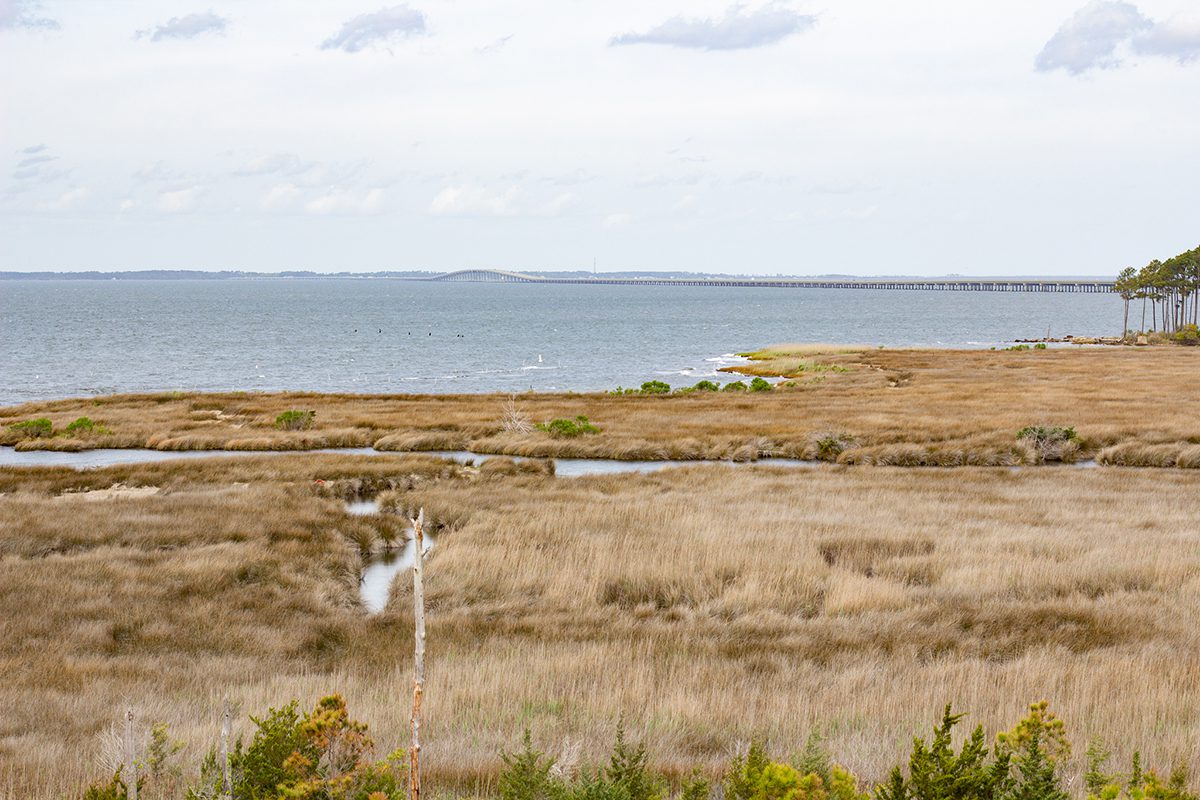
He explained, “When you really want to drive research, build on research, a lot of that is done with your grad students, Ph.D. students (and) post-docs.”
But several graduate students have chosen to return to ECU’s main campus in Greenville “due to a lack of housing” on the Outer Banks. The campus set up a weekly shuttle to bring students to CSI, “but that doesn’t provide the contact time or research experience often needed for their research,” Corbett said. Whereas three to four years ago, CSI had about six full-time doctoral and graduate students living and working on the Outer Banks, it currently only has two.
While CSI leases dormitory-style housing in Manteo that works well for undergraduates, the higher-level students and technical staff “typically need something more than dorm-type housing,” Corbett said.
In the future, CSI plans to continue to grow its capacity to harness the many forms of renewable energy available off the coast, including using the Gulf Stream as a source of energy, he said.
CSI staff members look forward to the Pioneer Array being stationed off the Outer Banks coast in 2024 and learning how that ocean observation system “can be integrated into our current research,” he said.
The Pioneer Array just finished a seven-year stint of continuous data-gathering off the Massachusetts coast.
CSI also plans to continue to study coastal change in order to supply solutions to coastal communities’ challenges.
“CSI is truly blossoming as a marine center,” Corbett said, noting the importance of its many local partnerships. “We want to work across these partners to create a more resilient coastal community.”
For more information, the public can attend CSI’s free, monthly “Science on the Sound” events, visit the campus or visit www.coastalstudiesinstitute.org.








